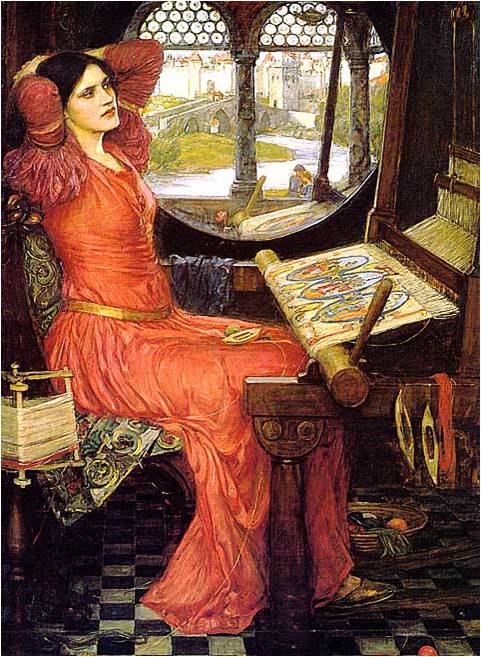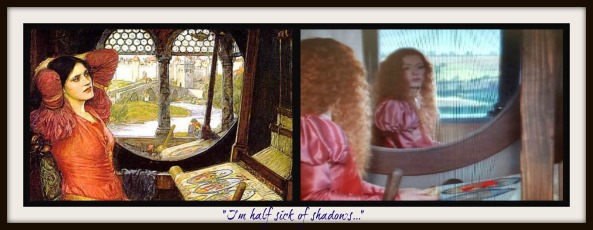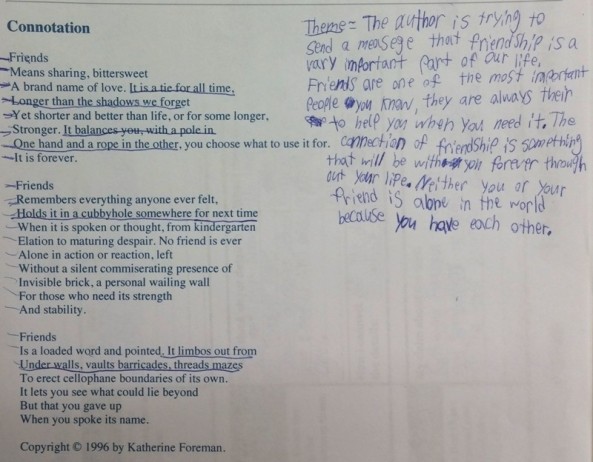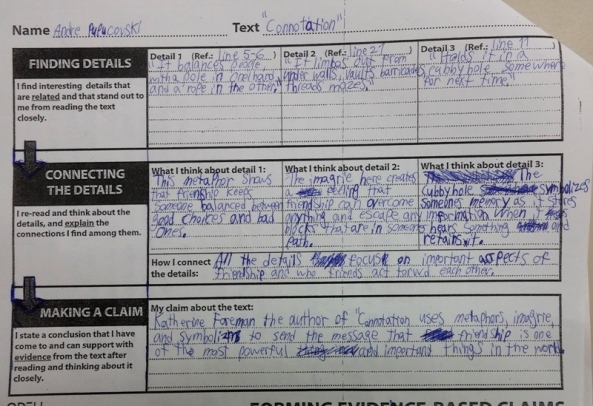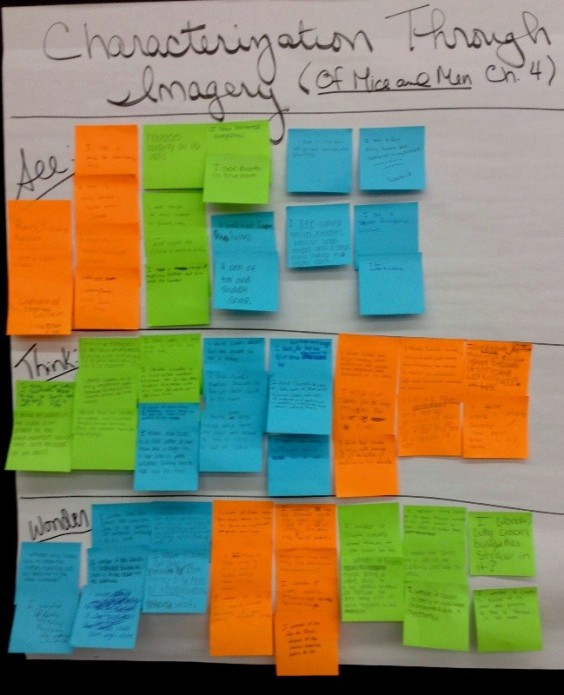Like we did with the previous narrative poems, we worked through the Elements of Fiction for Tennyson’s “The Lady of Shalott.”
You can read the text of the poem here:
The Lady of Shalott by Alfred, Lord Tennyson
Visible Thinking:
Both of the following paintings are by John W. Waterhouse and were inspired by Tennyson’s poem:
______________________________________________________
The Following video was published on Nov 12, 2012
In celebration of the 2009 bicentenary of the birth of Alfred, Lord Tennyson (1809-1892) WAG Screen made a short, filmed dramatisation of his poem The Lady of Shalott to be shown at The Collection, Lincoln. Inspiration for the visual imagery came from the many Pre-Raphaelite paintings that the poem inspired, but most especially the paintings of the artist John William Waterhouse.
Using the images from the Waterhouse paintings and from the above video, I placed the recreated images next to Waterhouse’s original. I also added a line of text from the poem that supported the “action” in the pictures:
______________________________________________________
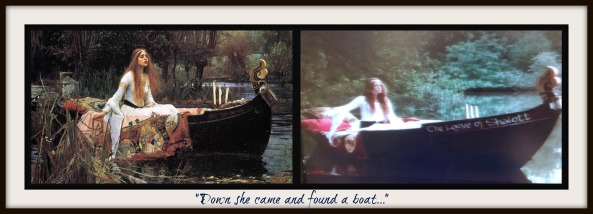 ___________________________________________________
___________________________________________________
From there, students did a Visible Thinking exercise about how 1) both images brought Tennyson’s poem to life, and 2) how the video attempted to recreate Waterhouse’s representations of the poem.
NOTE: As we are doing many Visible Thinking exercises with the poetry unit, we are sharing verbally instead of using PostIt Notes. I shuffle their class cards and deal them into three piles: See/Think/Wonder.
